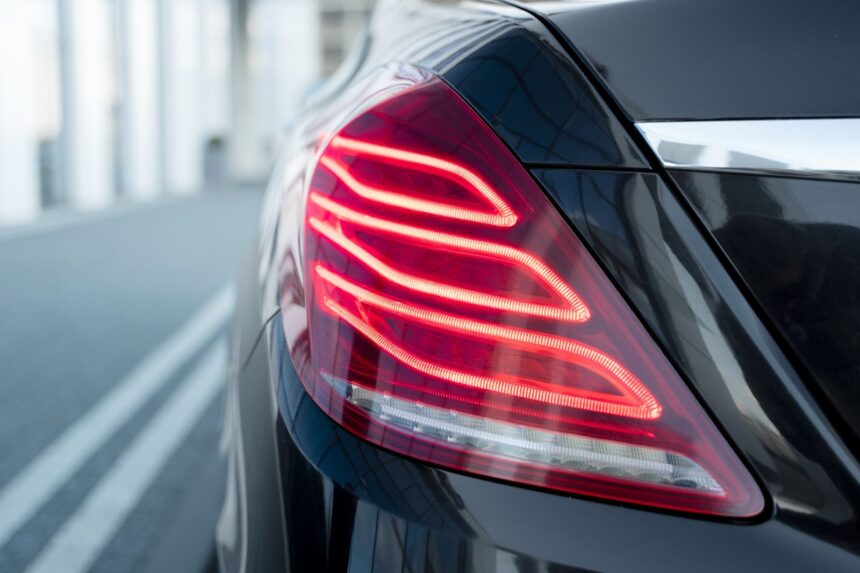When discussing car crashes, we often mention obvious causes such as speed, distractions, road conditions, or mechanical failure. But there’s another important element behind many collisions that slips by unnoticed: perception-reaction time.
Perception-reaction time (PRT) refers to the time it takes for a driver to notice a hazard and respond. A driver’s PRT can range from 0.5 to 2.5 seconds, depending on factors like visibility, surprise, and how alert the driver is. Even a one or two-second delay can result in a collision rather than a safe stop.
In this post, we’ll explain why PRT is important for understanding how accidents happen, what influences it, and how new technology is giving crash investigators a clearer picture of driver response times.
What Is Perception-Reaction Time?
You’re cruising down the highway, sipping your coffee, and suddenly a deer darts into your lane. You see it, your brain processes the danger, and your foot hits the brake. That process, noticing the deer, deciding to stop, and physically reacting, is what’s called perception-reaction time.
It breaks down into two main steps:
- Perception time: When you first notice something (like brake lights or a pedestrian).
- Reaction time: How long it take you to move (for example, hitting the brakes or swerving).
In lab environments where drivers are alert and anticipate danger, reactions are typically quick and consistent. But in the real world, distracted driving, fatigue, and limited visibility can slow driver response time by a few seconds or more, depending on the situation.
How PRT Fits into Accident Causation Analysis
When human factors experts study why accidents happen, they look at the driver’s perception and reaction time. They look for:
Visibility of The Hazard
Investigators check if the driver had a clear and reasonable view of the threat, such as another vehicle, a pedestrian, or debris, before the crash happened.
Driver Attention and Awareness
They consider whether the driver was mentally and visually focused on the road or distracted by something like a phone, conversation, or onboard technology.
Delays Caused by Physical or Environmental Factors
Fatigue, impairment, stress, poor lighting, glare, or a confusing dashboard can all slow a driver’s response time to notice danger.
By carefully examining these human factors, experts can know what was possible at the time and whether the driver’s actions were reasonable given the situation.
How Cognitive and Technological Factors Influence PRT
Perception-reaction time is influenced by how people think, interpret signals, and react under pressure. It can be different even for two healthy, focused drivers. Some less obvious influences include:
Task Complexity and Mental Load
When driving through an unfamiliar area, making sense of tricky road signs, or switching between screens, a driver’s response time can slow down. The brain can only process a limited amount of information at a time, which can make perception and reaction more difficult.
Driver Expectations
Drivers’ reaction time and driving vary when they anticipate an event. When a person waits for a car to move or a light to turn red, their reaction time decreases, but when an unexpected event occurs, even a highly alert driver may hesitate.
In-Vehicle Technology
Modern dashboards are loaded with screens, sensors, and notifications. Even though these tools are supposed to make driving easier, they can sometimes distract or delay a driver if the alerts pop up at the wrong times or too frequently.
Emotional State
Stress, anxiety, frustration, or overconfidence influence a driver’s response time. For example, a stressed driver might brake suddenly without thinking, while an overconfident driver might completely ignore hazard signals.
Taking all these factors into account gives crash investigators a much clearer picture, not just what a driver “should” have done, but what they could have noticed and reacted to in the moment.
Why PRT Is Key in Legal and Insurance Cases
When traffic accidents happen, it’s not always obvious who’s at fault. Lawyers, insurers, and crash investigators depend on perception-reaction time analysis to find out what took place. Knowing how long it took a driver to notice and react to a hazard, based on what they could realistically see and process, can affect everything from legal liability to insurance payouts.
Supporting Investigations with Human Factors Software
To analyze PRT more accurately, many legal professionals use Human Factors Software. These advanced tools simulate real driving conditions by factoring in details like road layout, visibility, driver speed, and environmental elements.
Investigators can then create detailed timelines that show what the driver likely saw, when they could have reacted, and how much time they had to avoid the crash.
Using PRT to Assess Driver Responsibility
PRT analysis helps map out the sequence: when the hazard became visible, how much time a typical driver would need to react, and whether the actual response matched that window. This timeline is a major consideration in deciding who was at fault and whether the driver’s actions were reasonable for the situation.
Courts and insurers use this data to make evidence-based decisions based on standard driver behavior.
PRT in Disputed Accident Claims
PRT analysis has become a deciding factor in many court cases and insurance decisions, particularly when the events leading up to a crash are disputed. A clear, well-supported explanation of a driver’s perception and response can either support or challenge claims of negligence. It brings clarity to complex events and gives decision-makers a more accurate picture of how and why a collision occurred.
Final Thoughts
Perception-reaction time is a deciding factor in accident causation analysis, helping experts decide how drivers respond to hazards in real-world situations. Instead of simply blaming crashes on driver error, PRT analysis shows how stress, visibility, and response time can affect what happens. It’s a clear way to see if a driver acted reasonably or if a slow reaction played a part in the crash.
Whether you’re investigating a collision or working to make vehicles safer, it’s helpful to look at drivers’ response time and behavior. This approach gives useful insight into what caused the incident and why, making PRT an important tool for both legal cases and technical studies.














